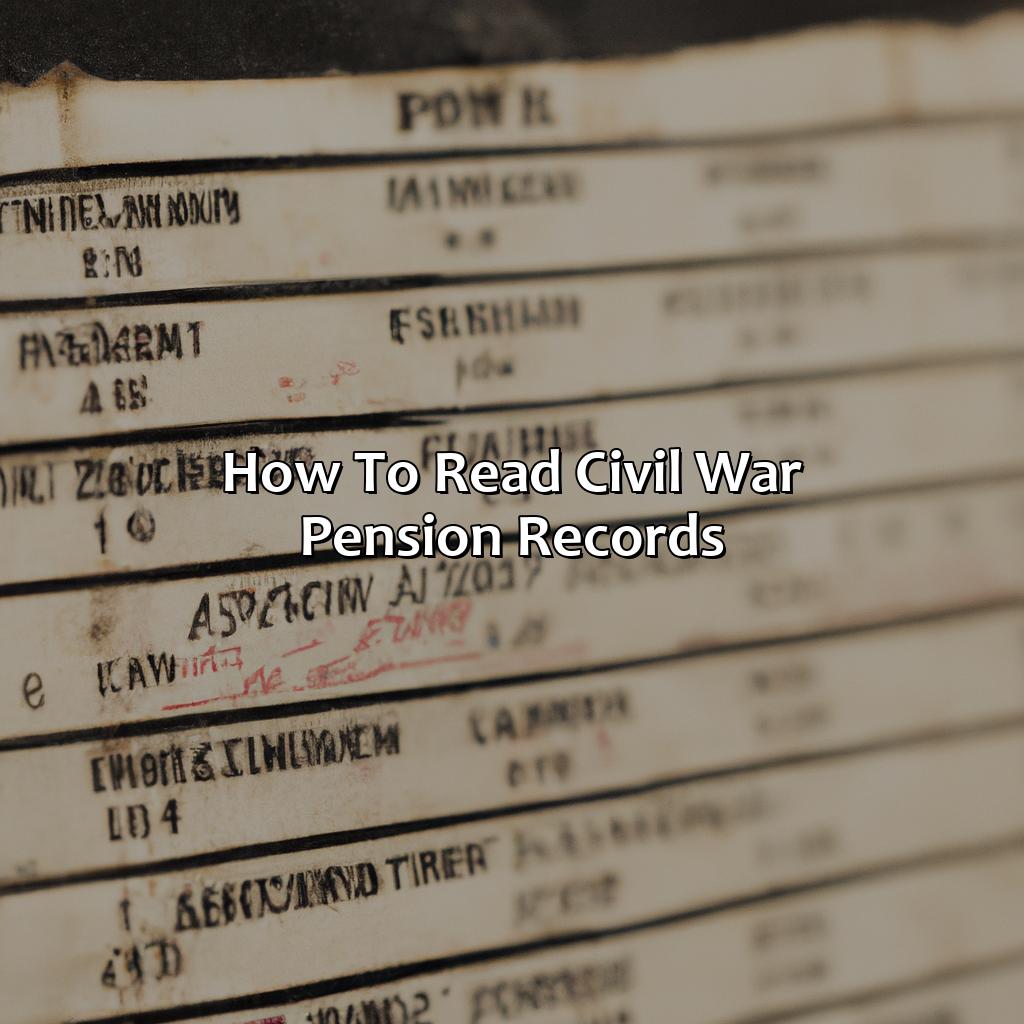How To Read Civil War Pension Records?
Key Takeaways:
- Civil War Pension records provide valuable information about soldiers who served during the Civil War and their families. Understanding the structure and terminology of these records is crucial to analyzing and interpreting the information contained within them.
- It is important to carefully analyze basic information about the pensioner, including their name, age, birthplace, and occupation, as well as their service history, including dates and locations of service, rank, and unit.
- Claims and pension details provide insight into the pensioner’s life after the war, including any injuries or disabilities sustained during service, as well as information about their family members and dependents who may have been eligible for benefits.
Are you tracing your family’s history? Discovering your ancestors’ involvement in the Civil War can be challenging, but reading Civil War Pension records can help. You can unlock clues that reveal your ancestors’ military service and more. Learn how to read them here.
Understanding the structure of the Pension records
Pension Records Structure Decoded
Pension records structure can be quite complex, but once decoded, they offer valuable insight into the lives of Civil War soldiers. These documents reveal important details about the beneficiary, the veteran, and their families, and can be a treasure trove of genealogical information.
To understand the structure, one must first know how to order Civil War pension files. The Pension records were organized into two parts: The Soldier’s File and The Widow’s File. Each part contained an abundance of documents, including military service records, medical records, and affidavits related to the pension application. The records were arranged chronologically and thematically within each file.
Within the Soldier s File, you can expect to find the veteran s enrollment papers, military service records, records of promotions, hospitalization records, and discharge papers (if applicable).Meanwhile, The Widow’s File contains affidavits, medical evidence of the widow’s condition, previous marriages, and proof of the service of her late husband. These records often provide a wealth of information about the veteran, including his dates of service, battles fought, and injuries sustained.
Interestingly, pension fraud was rampant during this period, and as a result, the government implemented stringent documentation policies. Therefore, it would be prudent to approach these records with a critical eye, especially when assessing the validity of the claims made.
Deciphering the Pension Records can be overwhelming, but delving into the intricacies of these valuable documents can be a rewarding experience for anyone interested in exploring Civil War history.
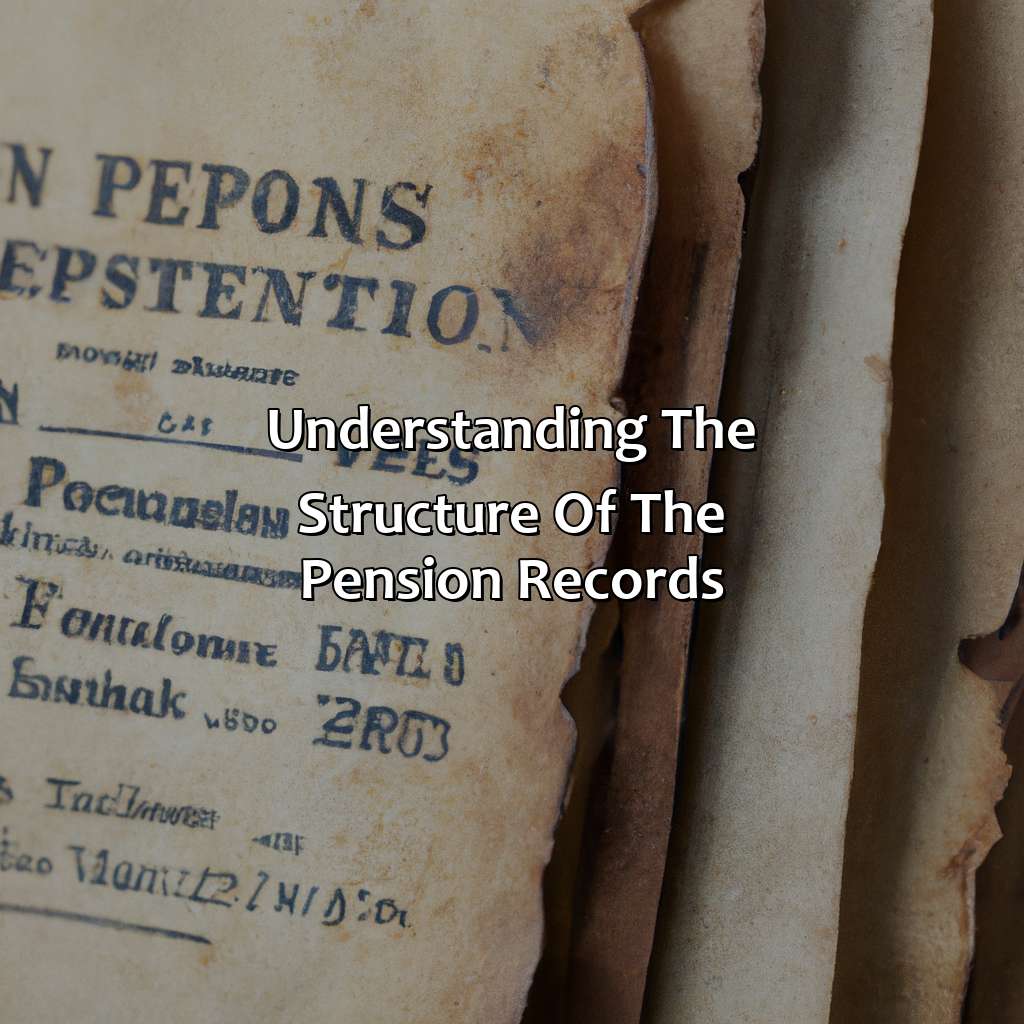
Image credits: retiregenz.com by Yuval Washington
Reading Civil War Pension Records
Reading Civil War Pension Records: A Professional Guide
Civil War pension records are valuable historical documents that can provide details about soldiers and their families. To read these records, one must first understand the purpose and content of the documents. Pension files contain information about the soldier’s service, such as enlistment dates, rank, and unit. They also include medical examinations and witness testimonies for disability claims and payment vouchers for the pension itself.
To gain a deeper understanding of the records, it is essential to be familiar with the language and terminology used by the government at the time. For instance, understanding the ranks of soldiers and military units can help clarify the information listed in the pension documents. Additionally, it may be helpful to know the soldier’s home state, as pension records were often filed in the same state where the soldier had lived.
When reading Civil War pension records, it is important to take note of the details, such as the dates and names of witnesses, which can lead to further research. These records may also contain family information, such as marriage certificates and birth dates of children. By piecing together these details, researchers can create a more complete picture of the soldier’s life and the life of their family.
For instance, one researcher uncovered a pension file that revealed a soldier had experienced a traumatic head injury that affected his ability to hold a job and support his family. The file also contained witness testimonies from family members that spoke to the soldier’s struggles and even mentioned his efforts to create a new invention. This information shed new light on the soldier’s life and legacy, and the researcher used it to add a new chapter to the soldier’s story.
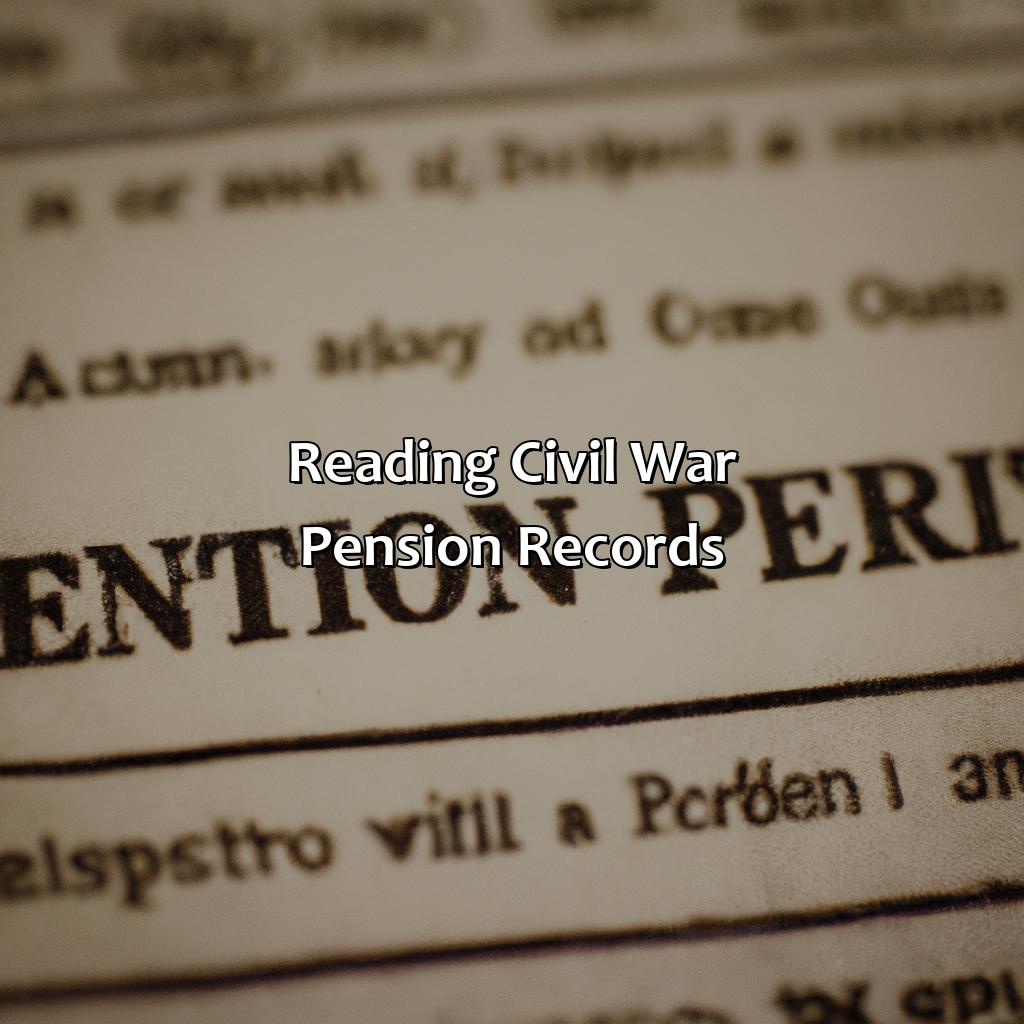
Image credits: retiregenz.com by David Duncun
Understanding the Terminology used in the Pension Records
Pension Record Terminology: A Guide for Understanding Civil War Documents
Pension records are crucial for understanding a Civil War veteran’s service, disability, and post-war life. However, these records contain technical language that may be challenging to decipher. This guide provides an overview of common terminology found in pension records.
When reviewing pension records, you may encounter military and legal terms such as “bounty,” “remarried,” “dependent,” and “witness.” It’s essential to understand these terms to gain a comprehensive understanding of the veteran’s history. The following list highlights other common pension record terminology:
- “Proof of Service”: Documentation confirming a veteran’s militia service, range from a discharge certificate to affidavits from fellow soldiers.
- “Pension Certificate”: Documented acceptance for receiving promised pension.
- “Invalid Pension”: Monthly payments given to veterans who were injured or disabled due to military service.
To gain a complete understanding of a Civil War veteran’s pension record, it’s essential to analyze and comprehend unique terms that may vary from document to document. By doing so, you can unravel a veteran’s unique story.
Pension records provide crucial insights into the experiences of Civil War veterans. For example, the Pension Act of 1890 granted pensions to veterans experiencing disabilities regardless of the injury’s cause, including non-war related accidents. Understanding the intricacies of pension record terminology can help researchers unravel historical events and provide insight into the challenges faced by Civil War veterans.
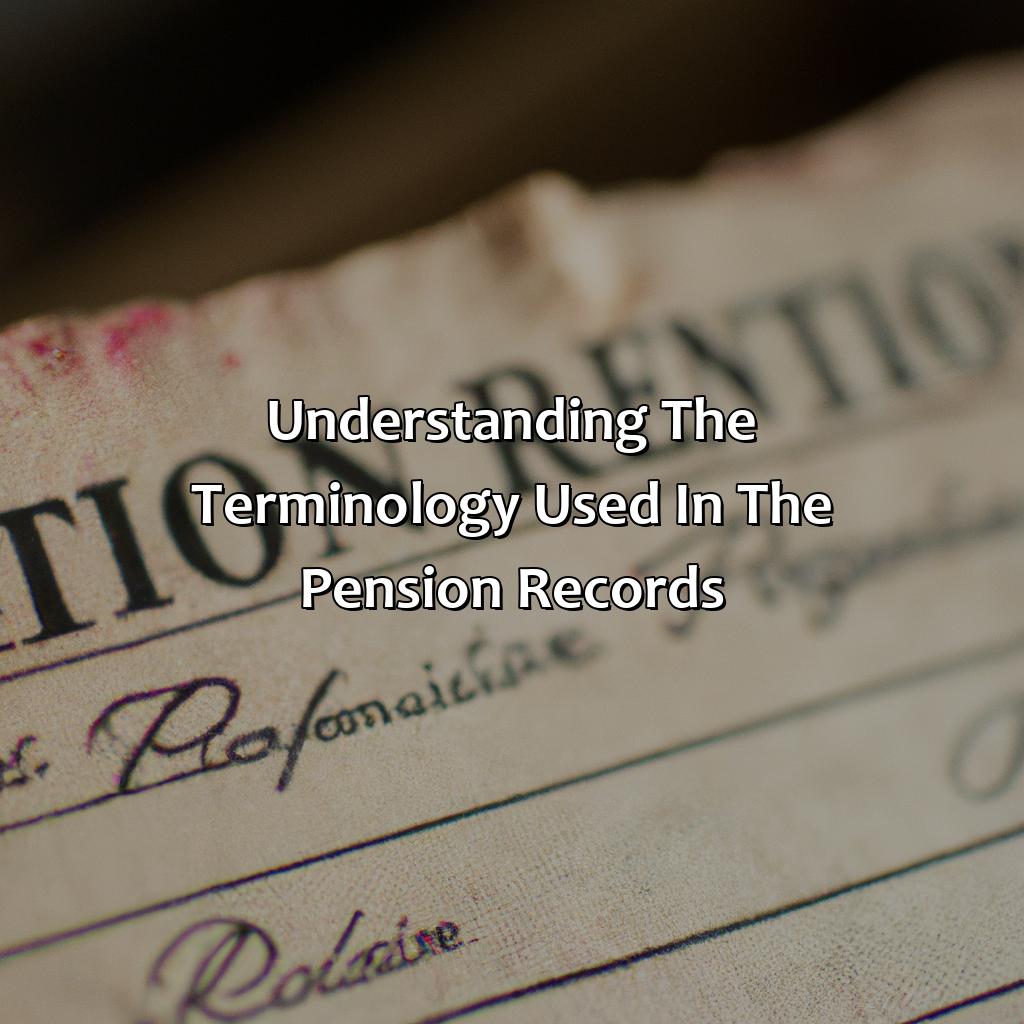
Image credits: retiregenz.com by Harry Washington
Tips for Reading Civil War Pension Records
Tips for Deciphering Civil War Pension Records
Civil war pension records can be useful sources of information for genealogists, historians, and scholars. These records generally contain valuable information about the military service and civilian life of the veterans and their families. To read and understand the contents of these records, follow these four tips:
- Understand the format: Civil war pension records may contain a range of documents, including medical exams, military service records, and personal statements. Familiarize yourself with the format to easily navigate through the lengthy records.
- Learn the military jargon: Military terms that may seem unfamiliar to a layperson, such as “captain” vs. “lieutenant,” “bivouac,” and “barracks,” require contextual knowledge to decode. Refer to historical dictionaries, encyclopedias, or military history books to decipher the jargon.
- Cross-reference information: Civil war pension records may contain discrepancies or outright falsehoods, so verify the information by cross-referencing with other sources such as census records, military service records, or Civil War regiments’ histories.
- Note the minutiae: Pay attention to the minutiae of the records, such as the names and relationships of dependents, the date of enlistment, the place of origin, the injuries or illnesses mentioned, the length of the service, the rank, and the discharge date.
In addition to the above tips, it’s essential to note that the records’ quality may vary depending on the state where the pension application was filed. Some states may have more detailed and organized records than others.
A true fact: The National Archives and Records Administration (NARA) holds over 9 million individual Civil War-related pension records, including records of widows’ and dependent children’s pensions.
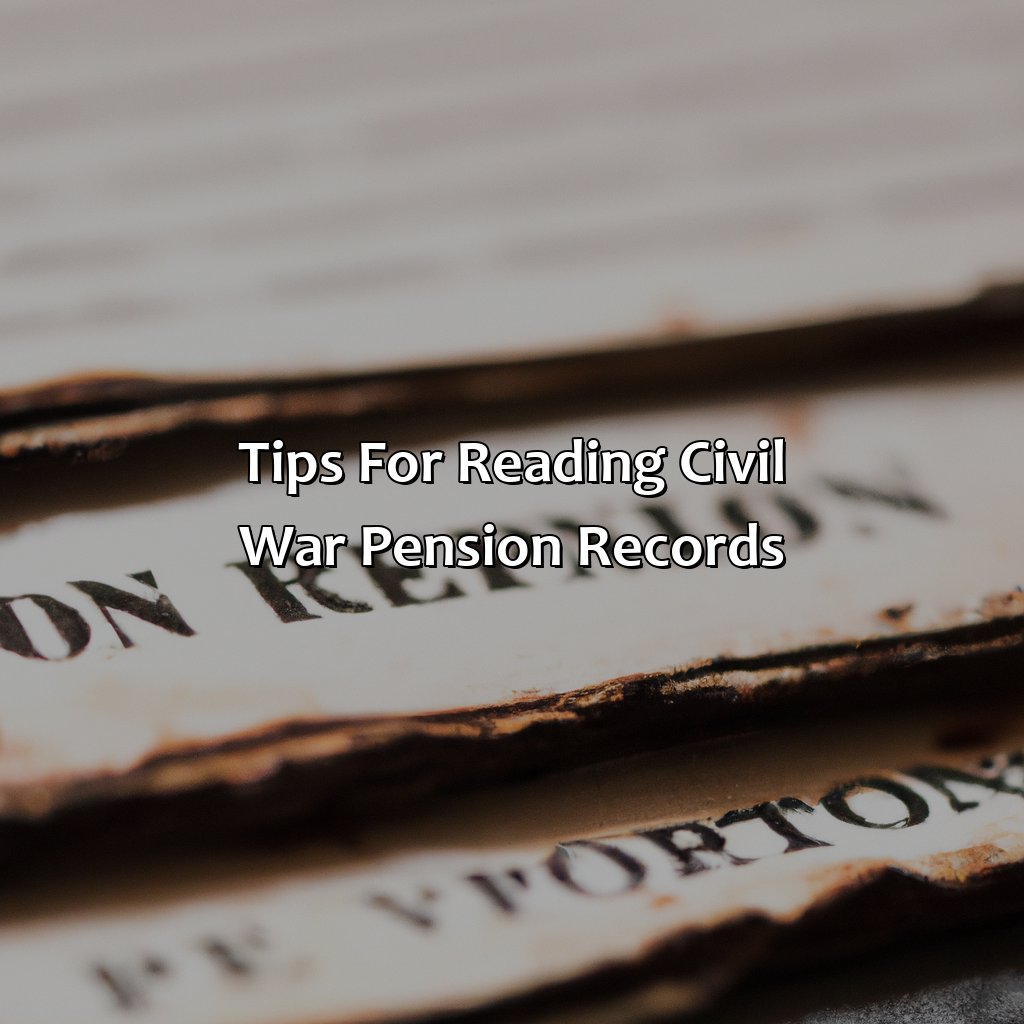
Image credits: retiregenz.com by James Arnold
5 Well-Known Facts About How To Read Civil War Pension Records:
Civil War pension records can provide valuable information about soldiers and their families, including dates of birth, marriage, death, and financial support provided. (Source: National Archives)
Pension records can be accessed through the National Archives and Records Administration (NARA), as well as through online databases such as Fold3 and Ancestry.com. (Sources: NARA, Fold3, Ancestry)
Pension records may include medical records, personal correspondence, and documentation of military service. (Source: National Park Service)
Pension records can also provide information about the soldier’s unit and battles fought, as well as any disabilities or injuries sustained during service. (Source: American Battlefield Trust)
Distinguishing between different types of pension records, such as invalid, widow, and dependent files, is important for understanding the information contained within. (Source: FamilySearch)
FAQs about How To Read Civil War Pension Records?
How do I start reading civil war pension records?
To start reading civil war pension records, you need to have the pension application number of the veteran or the widow. Once you have this number, you can search for the pension record at the National Archives website and download the files.
What information can I find in civil war pension records?
Civil war pension records contain a lot of personal information about the veteran or the widow. This includes their name, birthplace, dates of service, regiment, company, rank, and discharge details. You can also find information about their medical history, disabilities, pension payments, and correspondence with the pension office.
How can I understand the language used in civil war pension records?
Civil war pension records may use unfamiliar terms and abbreviations. You can use online resources such as the NARA’s Glossary of Terms Used in Military Records to help you understand the language. It is also helpful to read a few sample records to get a better grasp of the vocabulary used.
What are the different types of civil war pension records?
There are three types of civil war pension records: the full pension application, the pension index card, and the pension payment record. The full pension application includes all the information about the veteran or the widow’s service, medical history, and pension payments. The pension index card contains basic information such as the name, service dates, and pension application number. The pension payment record shows the amount of pension paid each quarter.
What should I look for when reading civil war pension records?
When reading civil war pension records, pay attention to the dates of service, disabilities, and medical conditions. Look for any correspondence between the pension office and the veteran or the widow. Check if there are any supporting documents such as affidavits or medical certificates. You should also look for any information about the veteran’s family, such as their spouse and children.
How can civil war pension records help with genealogy research?
Civil war pension records can provide valuable information for genealogy research. They can help confirm a person’s military service and provide details about their life after the war. You can learn about their family, their health, and their financial situation. This information can help you fill in missing pieces of your family tree and understand the lives of your ancestors.
 Checkout this IRS Loophole
Checkout this IRS Loophole 
